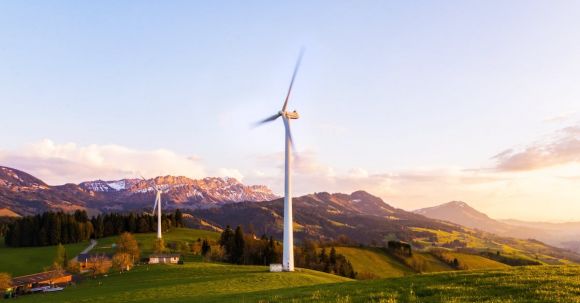In today’s rapidly changing world, the need for sustainable energy solutions has become more pressing than ever before. With the growing concerns about climate change and the depletion of fossil fuels, renewable energy sources have emerged as a viable alternative to meet our energy needs while minimizing the impact on the environment. In this article, we will explore the role of renewable energy in building a sustainable world.
Harnessing the Power of the Sun
One of the most abundant and readily available sources of renewable energy is the sun. Solar energy has gained significant attention in recent years due to its numerous benefits. Solar panels convert sunlight into electricity, providing a clean and renewable source of power. The use of solar energy not only reduces greenhouse gas emissions but also helps to decrease our reliance on non-renewable resources.
The Potential of Wind Energy
Wind energy is another promising renewable energy source that is being harnessed to power our world. Wind turbines are used to convert the kinetic energy of the wind into electricity. Wind farms, consisting of multiple turbines, are being established in various parts of the world, taking advantage of the strong and consistent winds. The use of wind energy helps to reduce carbon dioxide emissions and provides a sustainable solution for meeting our energy demands.
Tapping into the Power of Water
Hydropower, also known as hydroelectric power, is generated from the energy of flowing or falling water. Dams are built to capture the energy of the water, which is then used to drive turbines and generate electricity. Hydropower is a reliable and renewable energy source that has been used for centuries. It is a clean form of energy that does not produce greenhouse gas emissions, making it an essential component of a sustainable energy mix.
Exploring Geothermal Energy
Geothermal energy is derived from the heat within the Earth. This renewable energy source is harnessed by drilling wells into the Earth’s crust and extracting the hot water or steam to generate electricity. Geothermal power plants produce minimal greenhouse gas emissions and have a small footprint compared to other energy sources. By utilizing the Earth’s natural heat, we can tap into a sustainable and reliable source of energy.
The Importance of Biomass
Biomass energy is derived from organic materials such as plants, agricultural waste, and wood. These materials are burned or converted into biogas to generate electricity or heat. Biomass is considered a renewable source of energy because it can be replenished through the growth of new plants. By utilizing biomass, we can reduce the reliance on fossil fuels and decrease greenhouse gas emissions.
Creating a Sustainable Future
Renewable energy sources play a crucial role in building a sustainable world. They offer a cleaner and more environmentally friendly alternative to traditional energy sources. By transitioning to renewable energy, we can reduce our carbon footprint and mitigate the effects of climate change. Additionally, renewable energy creates job opportunities and stimulates economic growth in the renewable energy sector.
In conclusion, renewable energy sources such as solar, wind, hydropower, geothermal, and biomass are essential in building a sustainable world. These sources provide a clean and renewable alternative to fossil fuels, reducing greenhouse gas emissions and minimizing the impact on the environment. By harnessing the power of renewable energy, we can create a more sustainable future for generations to come. It is imperative that we continue to invest in and promote the adoption of renewable energy technologies to ensure a greener and healthier planet.
